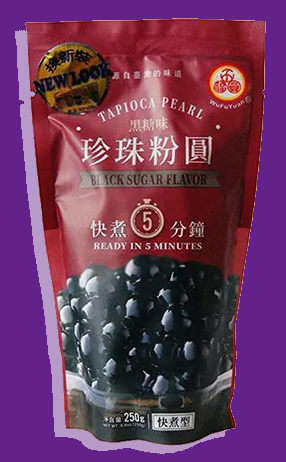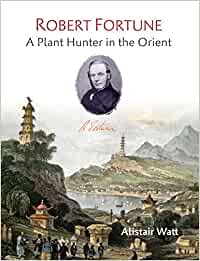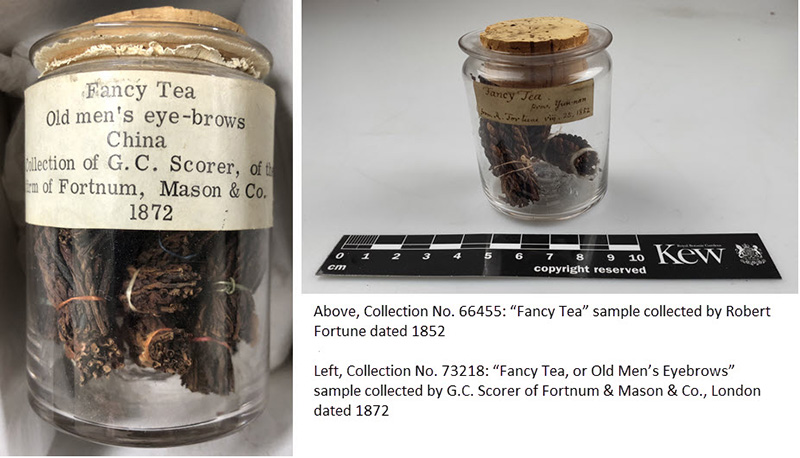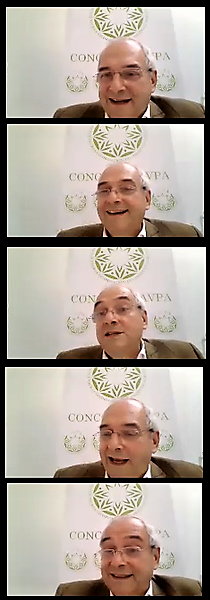Darjeeling is the most famous of India’s tea growing regions. Revenue from its spring flush also makes it the most lucrative, but the plants there are aging, wage inflation is high, and workers are restless. Innovation is overdue. In this podcast segment Aravinda Anantharaman speaks with Rishi Saria a third-generation planter, managing the Gopaldhara, and Rohini estates in Darjeeling.

The Way Forward for Darjeeling Tea
Rishi Saria is a third-generation planter, managing the Gopaldhara and Rohini estates in Darjeeling. Among other things, he has put Darjeeling’s autumn flush teas on the map by producing a flavorful range of oolong-styled teas. Rishi spoke about Darjeeling from the point of view of a planter, describing where things stand, and what it needs. He tells the story of how Darjeeling began producing oolongs illustrating the need for innovation and he offers personal insights into rival Himalayan tea produced in Nepal.
Aravinda Anantharaman: The conversation on Darjeeling tea often turns to Nepal and how it’s affecting the Darjeeling tea market. What are your views on that?
Rishi Saria: I am an Indian whose mother is from Nepal and I’ve never thought of Nepal as another country. Our borders have been very closely tied. We have gone to Nepal whenever we wanted to. Siliguri as a community has always traded with Nepal. So for me to say that there is competition from Nepal, it’s like saying my friend has planted a tea estate. I think he’s allowed to, they are allowed to do their thing.
The only problem is that I think Nepalis are not doing enough to promote tea in their own country.
Secondly, Nepal is a Bought Leaf Model and there is a lot of dumping of tea that goes on. Their per hectare revenue must be lower than that of Darjeeling. The factory and traders may be making money. Last year I heard that they even sold the high mountain green leaf for INR 20. Our CTC leaf last year was selling at INR 30, and at INR 32 this year.
The Nepal tea industry needs to understand that they have to stop this dumping model. They send the buyer 2,000 kgs of Darjeeling style samples. The buyer is going to pay you peanuts and they refuse to buy Darjeeling tea because Darjeeling tea producers don’t sell it for peanuts.
The gap between Nepal tea industry and Darjeeling tea industry is huge. Our cost is higher. If you look at the cost structure, Darjeeling tea will offer more to a worker than the Nepal tea industry.
They have to do more. There are exceptions like Jun Chiyabari but the bulk of the Nepal industry is not like that. They don’t have an auction centre. They don’t have a buyer-seller meet. They need to have a large spread to deal with the kind of quantity they have. They are not small anymore.
One problem there with Nepal is the organic certifications. If you are not a tea estate over there, it’s very difficult to get an organic certificate. For a Bought Leaf Model to have an organic certificate is extremely difficult because of the expense.
Most of Darjeeling is organic and competes in a different segment. That is one strategy, which some Darjeeling tea producers have taken. And the rest of us, we try to make better teas.
Aravinda: Is it in the tea that Darjeeling can differentiate from Nepal? Or is the differentiator in the working model of these two regions?
Rishi: I can tell you for sure that in the Bought Leaf Model, speciality tea has not worked for these issues: the clone is not known, the cultivar is not known. The transportation cost is causing damage. The transportation system is causing damage them in and there is very less confidence between the buyer and the seller.
We started making a lot of speciality tea at Rohini and Gopaldhara. Now we need a system to sell it. We are trying to increase the number of buyers. We try to do something different; we try not to offer what others are offering. If we offer what Nepal is offering, why will someone come to us? We charge more as our costs are higher. I cannot say that we are more efficient than them but we offer a better lifestyle proposition to the workers.
We also do a lot of direct marketing that helps. We sell directly to retailers and even to consumers. If we can sell 10 to 15%, 20% of our produce directly to consumers, it will take a lot of pressure off our balance sheet. In my mind, this is what we can do rather than harping about how Nepal is hurting us.
Look at Bhutan; you can see the kind of ties that India enjoys with Bhutan. Minus Darjeeling tea, we have the same relationship with Nepal. So how can we disturb that equation because of one product.
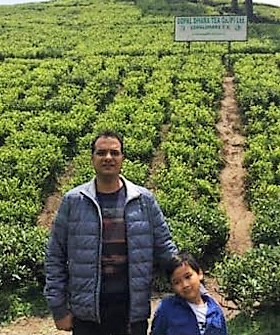
Aravinda: Where does Darjeeling tea now compared to say even 10, 20 years ago?
Rishi: There’s been a lot of progress. India is a far more progressive country than what it was doing between 1980 to 2000. We have certainly outpaced the economic growth by a long margin. That has had an effect on the tea industry as a whole. Our wages have gone up faster than what we would have planned. That is one challenge. That is one of the reasons why there is a lot of hue and cry. Wage Inflation has been rampant. Pre 2006, wage inflation was roughly 3 to 4% now its close to 10 to 11%, sometimes 15%. So wage inflation is a huge issue.
But if you look at the offer of teas, Darjeeling has added green tea. Darjeeling was never known for speciality tea. If you go through catalogs from 20 years back, you will find Darjeeling first flush and second flush in a retailers catalog. In a tea shop, if you asked for Darjeeling, they’d say, we have Darjeeling first flush and second flush. That has changed. You have very tippy Moonlight style teas now, we have the traditional china hybrid, we have green teas, we have white teas, we have some special hand-rolled, handmade stuff also. From two teas we have gone to at least eight or 10 teas.
Aravinda: So there is a lot of product innovation?
Rishi: There is a lot of innovation happening and it’s happening more with farms which are realising the changes that need to come in. Let’s talk about oolongs. Who thought Darjeeling would make oolongs. We don’t have a proper tea research Institute which guides us to all these things. But if we did, that would be wonderful, you know. Whatever effort planters have made, they are all taking a lot of effort. Learning and effort go hand in hand.
Today, some retailers will describe a tea as “oolongs from Darjeeling”. Until recently, we were told, “You don’t know how to make oolongs.” We asked, why can’t we make oolongs. They said, “You don’t know how to make oolongs. You don’t even have an oolong clonal with you.” So we started defining that, we started learning how to pluck, we used to send samples and get the response, not good enough, not good enough, not good enough. Then we started hitting some right notes. We started thinking about what is mountain tea… we started thinking about the style of making mountain teas.
Most of the machinery in both of my factories are not what we had pre-2000. We have a lot of electric dryers now. We have fixing machines, we have small rollers, we are even trying to get chaangwithering into the system, we have outdoor withering… so one sits on top of the other. You learn, you ask, you learn more and you think of more things. Every day you learn. Today, I was having a tea in the office; it was a very lovely oolong style green tea, very, very lightly oxidised and very fragrant. And the thought that occurred to us was why didn’t we try this before.
Aravinda: What do you think has to change in Darjeeling to support this innovation?
Rishi: I think the Darjeeling tea fields have to get upgraded and that will take a lot of time. That, in my opinion, is one of the biggest challenges. Can we upgrade our field fast enough to still be relevant? That will be my concern. That is one of the biggest concerns there. And our biggest safety with respect to that is we are the only tea growing region in India which is trying to make tea without milk and sugar. I think that advantage can continue for sometime.
We are moving in a direction where we think hundred percent of our produce in the leaf category should be without milk and sugar. That is what essentially is there in the back of my mind. What to make is the next question.
So business advantages, there’s a lot of demand for these kinds of teas within India. Internationally, we have to compete with China, Taiwan, Vietnam, Indonesia, Kenya, Japan. There is a lot of competition and unless you have a price competitive offering — which we don’t have because our fields are outdated.
Gopaldhara used to make 120,000 kgs in 1992-93. Now, it struggles to make 70,000. So, 40% of the crop is gone because the fields are old.
So we started replanting. My family before me did too and for some reason, those fields are still not ready; it’s been 12 years. I’ve done eight hectares since 2016 or 17; mine are also not ready. We are trying to put in close to at least one lakh plants every year.
It’s difficult to work in the mountains. Half of these areas don’t have roads so you have to carry all the plants. People have to have access to irrigation. We can only plant in summer. But it has to be done. There’s no alternative. So we now have close to 40% of the garden almost clonal but the balance 60% is there, that will take 30 years. But even if we get to 70:30 ratio, that’ll still be good. We’ll still be better off than many other estates that are not doing anything. All these things help in the long run.
For example, Rohini is completely clonal. You see the advantages straight away. The shoots are much better. Compared to 2019, Rohini produced 500 kg more than 2019. That kind of advantage is welcome. If you can get some irrigation going and wear out the drought, and you can get some of this e-commerce going for you, and get some retailers, buyers as partners who trust you and supply to them regularly… all these things will help you tide over.
Aravinda: Why don’t we see much Darjeeling in the auctions? Is that no longer a relevant route for Darjeeling’s teas?
Rishi: Auctions help if you are the exporter. It’s very difficult to trade in tea without an auction system, that is a fact. The system allows you a lot of availability, otherwise product sourcing can be quite difficult. It is based purely on demand and supply. I think it sets the benchmark for the lower grades. If you are a buyer, you tend to buy the cheaper grade because you know it’ll always be there. Nobody tries to do private sale of ordinary teas unless they are looking for a quantity, which they want to contract and not fight in the auction so that prices go up.
The top offerings never make it to auctions. So what happens to top offerings? Either you’ll find a wholesaler with whom you have good contacts and he feels confident buying your expensive tea and selling it. Which means he doesn’t want competition and wants some assurance that he won’t face too much competition. Otherwise you have to sell one bag, two bags, because everybody may not like paying such a premium for that tea. That is the difficulty in speciality tea. Everybody will not appreciate it. I have not found many buyers appreciating the same tea in speciality; they always want variety. So they buy one sack of this, one sack of that, different ranges so they know they’ll be able to sell something or the other.
So privately, if you want to sell specialty tea you need a large set of buyers. Otherwise you will not sustain. It’s not easy to sell a speciality tea at a price in which it is remunerative. It’s really difficult.
I know a lot of people who don’t even buy one kg of speciality, and I know so many buyers who don’t buy a single kg of ordinary tea. And I sell to both of them.
Auction cannot help you in speciality. And we don’t have those kind of tea fields to make common tea. There’s a garden in Darjeeling with yields close to 900 kgs / hectare. In Gopaldhara, I cannot produce more than 400-450 kgs/hectare. So how can I compete with them if I don’t make something special. Those that are like Gopaldhara and organic, they are even lower yielding than us. Everybody is not on the same boat. If Rohini makes a decent quality tea for the whole year, it is fine. Gopaldhara really needs a speciality tea market to survive.
It’s got a lot to do with what kind of tea fields you have, what kind of elevation… elevation of 87 gardens is from 500 feet above sea level to 7,000 ft. and they’re all Darjeeling. So everybody’s on a very, very different boat. They cannot do the same thing that’s and they cannot cater to the same market.
Every tea garden in Darjeeling has its own story to tell.
Aravinda: What about markets? Is Darjeeling still reliant on the export market or is India emerging as a market for Darjeeling tea?
Rishi: It is changing for sure. Last two years have been a washout for the Indian market because of the virus. It has been shut. So we may be forgetting some of our close friends. We have not been in constant touch with them. They are not in our memories and we are not in their memories. Frankly speaking, the virus has killed the speciality tea trade. Unless they’re buying by e-commerce, there’s no reason why they will go to a tea shop to risk themselves and have a cup of tea.
I think the high end Indian market is out. I don’t think that is coming back again this year.
Internationally, things are more open. UK looks like they will lift their lockdown soon. Germany is also lifting some of the restrictions as are some of these Western European countries? US is opening up completely…
I think it’s better than last year. I don’t know if we are going back to 2019 so quickly… Let’s assume the vaccination in Western countries is over by July, realistically speaking. So we’ll have some kind of semblance July onwards, that is what I feel.
Aravinda: And the prices?
Rishi: The production for the medium segment is still not out. We are still in the very expensive category of teas. We have not done any major deal in the medium end.
Last year, the prices nosedived. That will not happen this year. But the speciality tea sold. There could be a percentage decline but it’s not like what I saw in second flush. We were hardly able to move the tea in second flush. We were not able to sell much of the autumn flush also.
Aravinda: What is a way forward for Darjeeling tea?
Rishi: I think we really need support from the government to help us revive the tea fields. It can be in the form of a long-term loan, It can be in the form of a subsidy. It can be a combination of both. Let’s say you are removing an old area in Gopaldhara which is yielding 300 kg/hectare. I think the average price would be something in the region of INR 500. If we do 2 – 4 hectares a year, that reduced revenue can come as a subsidy, partial subsidy or a combination of loan.
Aravinda: What about the plantation model itself? Is it still workable?
Rishi: In India we have not been able to make quality tea from Bought Leaf Factories. If there is some example, it is Tea Studio. But it’s certainly not happening in a large scale. So to say that the plantation model has no future is not fair. The combination of an educated resourceful owner with assured workers has its strength. You cannot say its completely useless. That combination has something to offer.
It can all be worked out provided you have the field in order, that is the basic requirement. Whenever I think about what is missing, the field is missing. Once that is available, then you can start going back to the drawing board and start doing things.
The problem with the plantation model is that you have to pay the workers, whether you have work or not. So we will always be plucking in the rains and we will always be doing a lot of the produce even during the banjhee (dormant) period. Among mountain regions, we must be the only tea region in the world which will be plucking during the banjhee. That’s the disadvantage of having a plantation and having to provide work 365 days a year.
As an industrial body, I think planters need to start selling first, second and autumn differently from rain flush. We don’t do this. It can be very confusing for the consumer and buyer community as to what is Darjeeling. If you go to my website, we have a bai mudan that we made this year from that very fine artisan plucking, selling for INR 800 for a 20 g pack. We also have 1 kg Darjeeling broken at INR 800 or 900. This can be confusing to the consumer that the same estate is selling a kg for INR 800-900 and is asking INR 30,000 for another.
We have to develop the terroir. How do we stand out, what is Darjeeling capable of… We have Japanese bushes at Rohini and they look like a cousin of Japanese tea. We make them mildly oxidised. They are different from the tea made by the same bushes in Japan. The place, the culture, the climate impacts the tea.
We need to define this space. There’s a lot of false promotion that is happening. We need to get some intelligent content out there. There is a lot of misinformation that we have to clear. We need to say: This is what we make. This is how it is different. This is what kind of flavors you can expect. This is how you have to brew it.
I think all these things need to come out and is currently missing.
Aravinda: What about second flush this year with the weather?
Rishi: I think it’ll be better than last year. We should have our regular buyers back. They’ve been writing that they’ll be buying this year and that’s encouraging. For estates that are catering to the HORECA segment, I think that is quite a welcome news.

DARJEELING TEA
This year, Darjeeling is trying to make up for a poor 2020. Official plucking dates was February 21 and the season began on an optimistic note. But at the end of the first quarter, the mood is of concern from drought-like conditions and a severe second wave of the Covid pandemic. Rainfall was less than half received in March last year, at 27.8 mm as opposed to 66.2 mm in 2020. Number of rainy days was down to 3.8 in March 2021, from 6 in March 2020. Temperatures have seen a 1 C rise in maximum temperature and 0.6 C rise in minimum temperature, at 23.3 C (Max) and 13.3 C (Min).
March production data shows 172,294 kgs which is lower than March 2019 which was 227,790 kgs. We will be tracking Darjeeling climate, production and market news in our weekly Tea Price Report.
Darjeeling in the Indian state of West Bengal is home of a tea that comes with a 150-year legacy. Located in the far eastern part of India, almost at the Himalayan foothills, Darjeeling’s tea regions are Mirik, Kurseong, Darjeeling, Teesta Valley, Rungbung Valley and Kalimpong. The elevation ranges from 500ft to 7000 ft, impacting the flavours of the tea that is produced here. While black tea has been the mainstay of this tea region, we now see a wide range of tea types and tea styles from here. Darjeeling enjoys three main flushes – spring, summer and autumn. Darjeeling tea is protected by the Geographical Indicator (GI) tag which means that only 87 tea gardens can call their teas as certified Darjeeling tea.
Share this post with your colleagues.
Signup and receive Tea Biz weekly in your inbox.
Never miss an episode
Subscribe wherever you enjoy podcasts:







